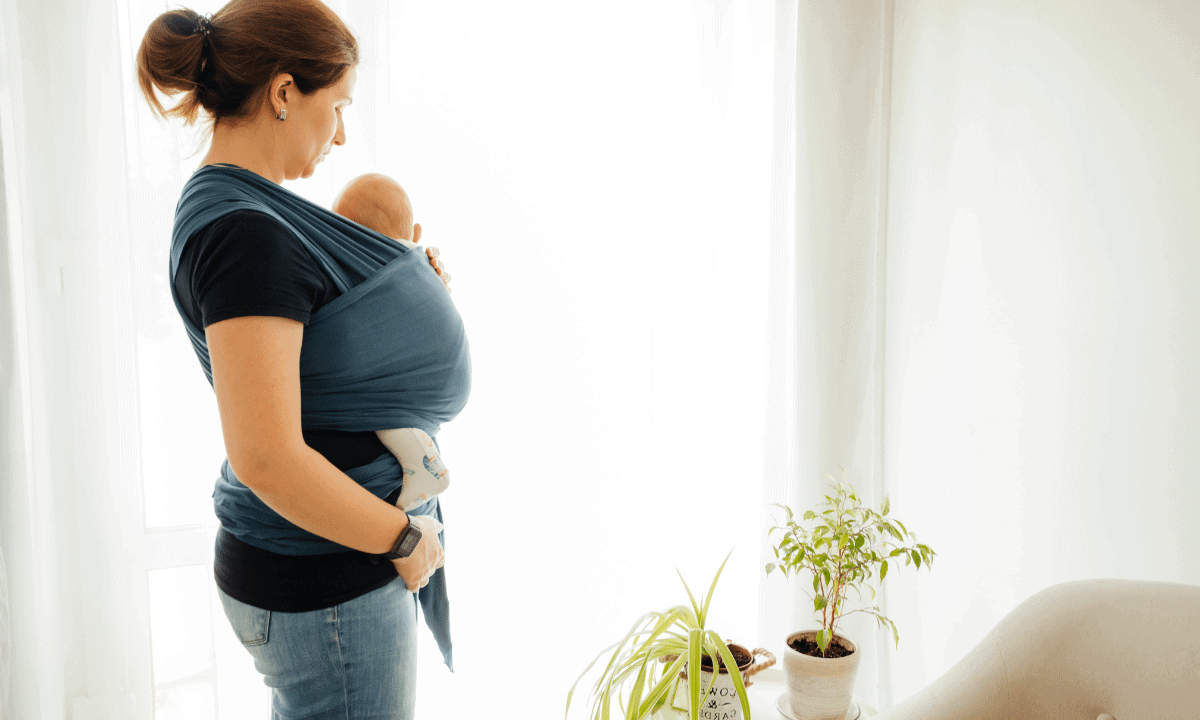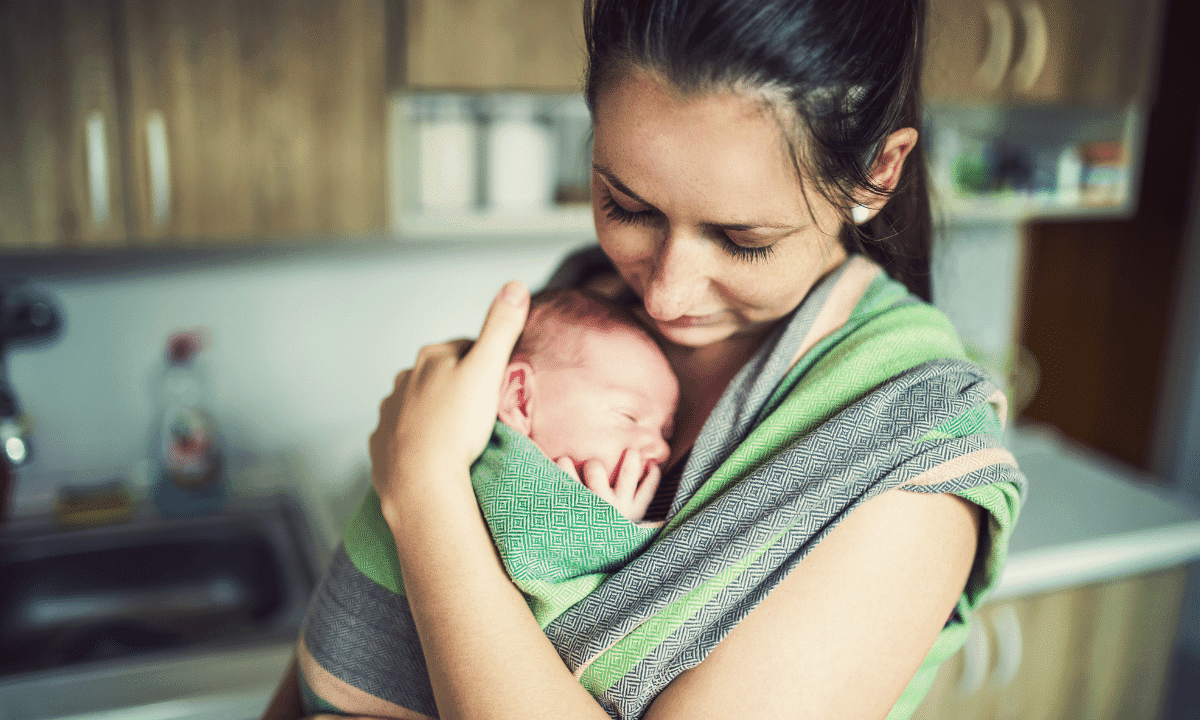The babywearing culture is enormous, with a baby wrap for every occasion and preference. With so many styles, brands, patterns, and fabrics to choose from, you’ll find the perfect wrap that fits your needs!
The great thing about all these baby-wearing options? They allow babies to have a passive position, which means they’re facing inward on their chest with their legs sticking out towards you. Keep reading to learn everything you need to know about how to tie a baby wrap.

Table of Contents
How To Tie A Baby Wrap
The four most common carry positions for baby wraps are front-facing, out in the hip (side) sling, and back carries. Some wrap brands allow you to wear your child’s weight more comfortably by using all three of these methods at once or switching between them depending on what feels best.
The front inward-facing position probably comes to mind when most people think of baby carrying. And rightfully so, because it’s the most common way to use your wrap and still be discreet about breastfeeding!
One of the critical positions in babywearing is “facing out”. This means that your child’s backside and legs are supported by their hip to chest area while they face away from you. Here’s how to tie a baby wrap:
Step 1
Unroll the wrap and look for the center of it. The center of a Boba, Moby, or Solly wrap has a tag to distinguish it.
Step 2
Cross your hands behind you, then pull them up to tighten the wrap and over your shoulders. The goal is for this position of crossed arms and back will form an “X” shape.
Step 3
Gather the cloth and tuck it through your chest, ensuring an “X” high on top of you. This will tell babies how far forward they should sit in their seats not to fall over.
Step 4
In a double knot, wrap the baby carrier around your waist. Tie it behind your back, on your side, or in front of you, whichever is most comfortable. You may wrap it once or twice around your waist, depending on the length and size of the fabric.
Step 5
Observe the front for any potential gaps, adding 7-9 inches to the altitude. Make sure the neckline is in the proper location and that the material is sturdy and pleasant to cover your shoulders.
Step 6
Place your infant, facing you, over your other shoulder and side (the one nearest to your body). The first leg should go through the inner panel before the other portion goes through the outside or inside panel.
Step 7
Now you have an X-sitting posture for your baby, and you’ll pull the inner fabric covering their back to complete it. The inside panel should cover their back, bottom, and thighs.
Step 8
Remove the straps and have your baby sit back down. Repeat this step with the outside panel. Check again to see whether your baby is sitting properly ergonomically in the correct posture after both boards have been dragged across their back.
Step 9
Take both of the baby’s legs and slide them down the outside horizontal panel to hang off each side. Then pull on those panels until the neck of the infant lies inside out beneath themselves.
Step 10
Put your baby into the wrap while they are on their side with legs tucked under to keep your baby safe and warm. Make sure you have a comfortable fit by folding the bottom of the fabric between the knees for extra warmth.
Step 11
Lastly, your baby might be fussy at first, but you can work through the process by bouncing and swinging them back and forth. After a few minutes of soothing tones they should calm down.
Safety Tips
Babywearing is a fantastic way to bond with your baby and helps relieve stress for both of you. I had a colicky or reflux child who wouldn’t stop fussy-mingling initially, but after 10 minutes, they would fall asleep against me.
A benefit to babywearing is not having to worry about your baby’s airflow. Baby wraps provide the perfect amount of support for any age, ensuring you can keep them comfortable and happy while out with friends or on family adventures.
When you hold your baby in a sling, they should be high enough for you to kiss their head. Make sure not to walk too close when they are sleeping, or else their heads may obstruct views of what’s around them, like floors and walls directly ahead.
It’s important to note that it’s not safe for the baby in your sling to come into contact with hot objects like stoves or irons. The last thing you want is for them to get burned.
Final Thoughts
Now that you know all about baby wraps, it’s time to put this information into practice. Remember, the key is to find the right size, pattern, and position for your baby. Soon enough, you will be a pro at wrapping your little one up snugly in this comfortable carrier.

